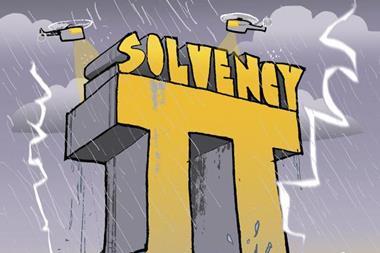Most European insurers will be able to make the transition to the new Solvency II regime without having to raise additional capital, according to Moody’s.
In a special comment published today, Moody's Investors Service says that the results of the fifth Quantitative Impact Study (QIS5) show that most insurers’ capital levels exceed the directive's solvency capital requirement.
Moody's Vice President Dominic Simpson said: "Specific companies are not cited in the results, but we believe those that did not participate at all and those that reported solvency coverage ratios below 100% are likely to be smaller entities with little business diversification. The results would seem to confirm our view that few of our rated insurers need to raise capital because of Solvency II implications."
It also says the QIS5 exercise shows that the chances for a relatively smooth crossover to Solvency II have improved, even though there is "unfinished business" in some areas, such as valuation of technical provisions; a consistent definition of contract boundaries; the valuation of deferred taxes and expected profits arising from future premiums.
QIS5 was run to assess the practicability, implications and impact of specified approaches to insurers' valuation of assets/liabilities and capital setting under Solvency II. Almost 70% of all European insurance and reinsurance companies, which Solvency II will apply to, participated in QIS5.
The participation rate for QIS4 was 33%, which gives greater weight to the QIS5 results. The The QIS5 results were announced by the European Insurance and Occupational Pensions Authority (EIOPA) in March 2011.
However, the report says that there are several aspects to the QIS5 exercise and results disclosure that require careful interpretation.
Simpson said: "The data had to be provided in a short time-frame, which could compromise its quality. Also, the test was based on year-end 2009 information and balance sheets could materially change by the introduction of Solvency II from 2013. Furthermore, QIS5 did not test risk-management requirements which for smaller, less sophisticated companies could prove a greater stumbling block than meeting capital requirements."






































No comments yet